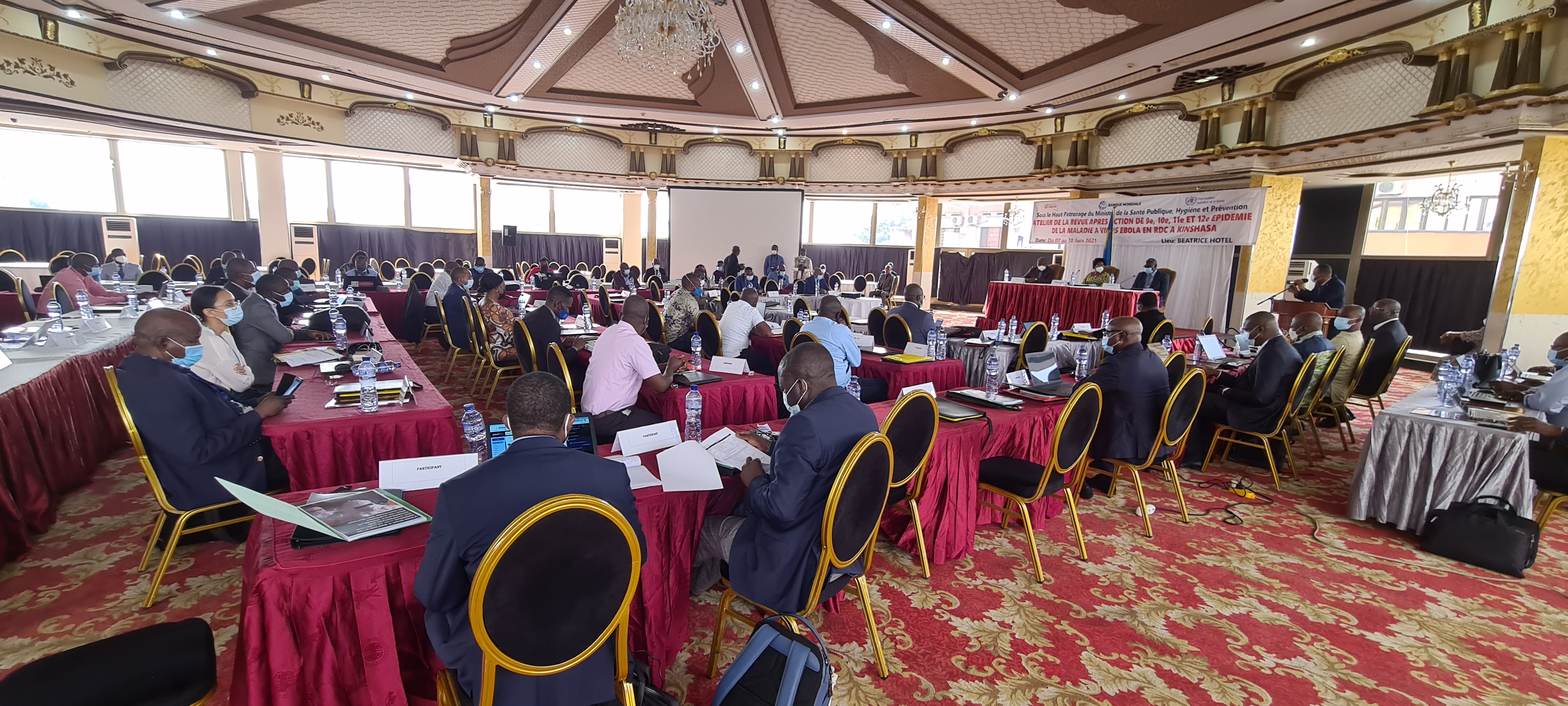The Democratic Republic of Congo experienced four consecutive outbreaks of Ebola virus disease (EVD) between May 2018 and May 2021, marking the 9th, 10th, 11th, and 12th EVD outbreaks. The response to the 10th outbreak was particularly challenging as it occurred in an active conflict zone. Moreover, the 10th outbreak was declared as a Public Health Emergency of International Concern (PHEIC), which resulted in 3470 cases and nearly 2300 deaths. Crucial recognition of the need to strengthen cross-sectoral preparedness planning and response to future health emergencies compelled the government to take action. The Ministry of Health, supported by WHO and partners, conducted an After Action Review (AAR) of the response to the 9th through 12th outbreaks. The review aimed to capitalize on best practices, identify areas and actions for improvement, and promote individual and collective learning. During the subsequent 13th outbreak, the lessons learned from the review enabled more timely response to the outbreak, which culminated in 11 total cases as opposed to the 10th outbreak which was much longer and had 315 times the number of cases. When the 13th EVD outbreak occurred, all local capacities for EVD management, built during the 10th and 12th EVD outbreaks in the North Kivu province, contributed to scale up rapid response and containment of the outbreak, with the community playing a critical role.
How did the Democratic Republic of Congo do it, and how did the WHO Secretariat support?
- By using a mixed-method approach – The AAR included four phases: a desk literature review, an online survey, key informant interviews, and focus group discussions. Focus group discussions were particularly helpful for triangulating the findings attained using other methods, analyzing cross-cutting issues, conducting root cause analysis, identifying contributing factors, and prioritizing activities needed to improve preparedness and response moving forward. WHO developed the AAR methodology used in consultation with the Ministry of Health and provided technical and financial support for the conduct of the AAR.
- By considering all components of the response – The AAR covered all public health response pillars, including coordination, surveillance, laboratory, case management, infection prevention and control, vaccination, risk communication, and community engagement. The AAR structure and pillars aligned with the Strategic Response Plan for the Ebola Virus Disease Outbreak in the Provinces of North Kivu and Ituri, Democratic Republic of the Congo, which was developed by the Government of Democratic Republic of the Congo with support from WHO.
- By prioritizing critical actions for improvement – Actions included: improving coordination, leadership, and procedures; building human resource capacity to conduct trials; developing strategies for health service continuity; cross-border disease surveillance; infection prevention and control; water, sanitation and hygiene; developing guidelines for the mandatory inclusion of traditional healers in community-based monitoring; strengthening capacity for water and waste management in high-risk areas; and enabling the rapid deployment of mobile laboratories with genome sequencing.
- By enabling advocacy and resource mobilization to turn lessons learned into action – AAR planning and implementation took six months. It culminated with a meeting between technical and financial partners in June 2021. By facilitating advocacy and resource mobilization, this step in the AAR process was vital to ensure that findings which aimed at long-term health systems strengthening were put into practice.
 Photo Credit: © Ministry of Health, Democratic Republic of the Congo
Photo Credit: © Ministry of Health, Democratic Republic of the Congo
Photo Caption: Focus group discussion sessions during the After Action Review
AARs contribute to building a culture of continuous improvement and can be a means of sharing innovative solutions for tackling emerging public health risks. The actions undertaken for EVD will inform better preparedness and response to potential future EVD outbreaks and other complex health emergencies in the country and beyond. The Ministry of Health and WHO have repurposed some of the capacities and resources available for EVD response in the country to respond to the 13th EVD outbreak and to the COVID-19 pandemic. The rapid response and contact tracing teams, local emergency coordination committees, infection prevention and control measures that supported the EVD responses, just to mention a few, were repurposed for the response to the subsequent EVD outbreak and COVID-19.
WHO continues to support countries globally to build capacities to prepare, prevent, detect and respond to health emergencies through use of AAR as continuous functional assessments, including through AAR following the response of real-world events.
Photo Credit: © Ministry of Health, Democratic Republic of the Congo
Photo Caption: Official opening of After Action Review sessions by Dr Jean Jacques Mbungani Mbanda, Minister of Public Health

